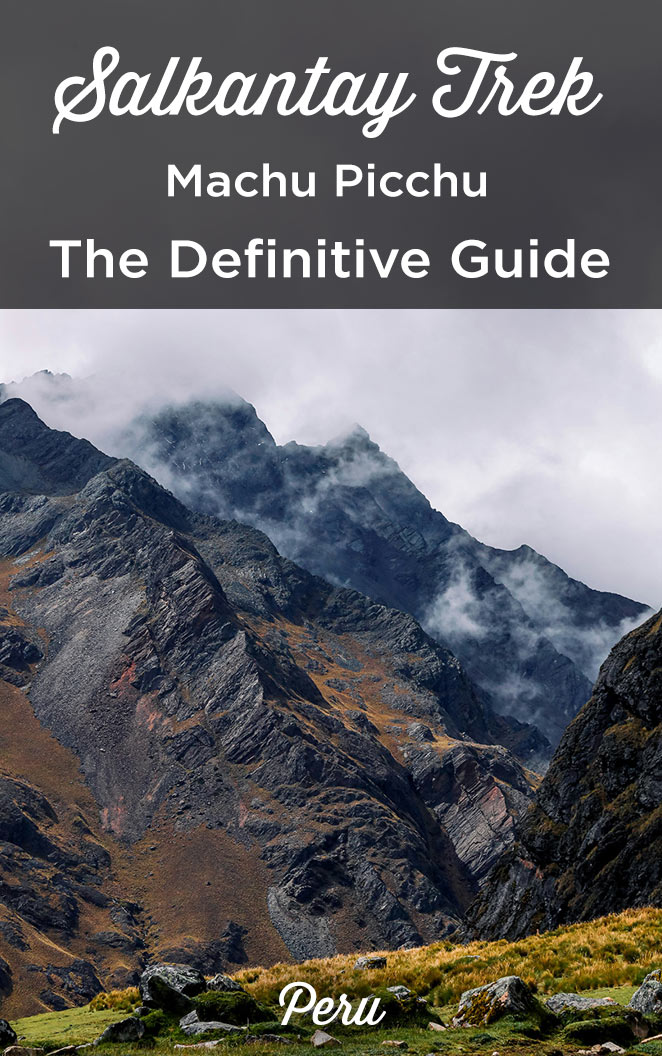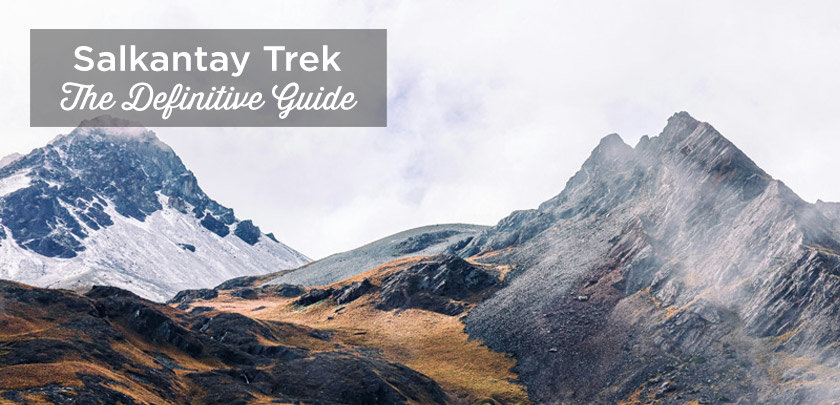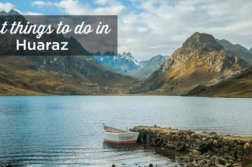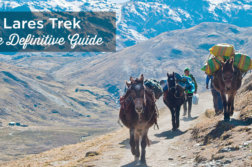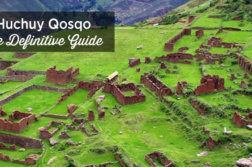Trekking the Salkantay: The Ultimate Adventure to Machu Picchu
Are you planning to do the Salkantay Trek during your Peru trip?
Great idea!
The Salkantay Trek is one of the most stunning treks in Peru, crossing incredible landscapes between rainforest and high mountains, all the way to Machu Picchu.
Less touristy and lesser-known than the famous Inca Trail, it has still been named by National Geographic Adventure Travel Magazine as one of the best treks in the world!
This multi-day trek offers a perfect combination of adventure, nature, and cultural exploration, taking you through breathtaking views, passing through remote villages, and offering an unforgettable experience before reaching Machu Picchu.
In this guide, I’ve gathered everything you need to know about the trek, including the itinerary, practical information, and useful tips.
So, how do you do the Salkantay Trek? Let’s find out!
Sommaire
- Trekking the Salkantay: The Ultimate Adventure to Machu Picchu
- What is the Salkantay Trek Itinerary?
- Is it Possible to Do the Salkantay Trek Solo (Without an Agency)?
- Booking the Salkantay Trek: Everything You Need to Know
- Is the Salkantay Trek difficult?
- How high does the Salkantay Trek go?
- What’s the temperature like on the trek?
- What happens if I’m too slow?
- What happens if I fall ill?
- Are there any compulsory vaccinations?
- How many people make up a group?
- How comfortable is the trek?
- Are there toilets available on the trek?
- Should I leave a tip?
- Where can I leave my suitcase or rucksack during the trek?
- Do I need to bring money?
- What is the age requirement for the Salkantay trek?
- How much does the Salkantay trek cost?
- What’s the difference between the Inca Trail and the Salkantay Trek?
- What Other Treks Lead to Machu Picchu?
- Where to Stay in Aguas Calientes
- Where to Stay in Cusco
- Book Your Flight at the Best Price
- Rent a Car in Peru
- Traveling to Peru? These articles will help you!
What is the Salkantay Trek Itinerary?
If you’re planning to take on the Salkantay Trek, you should know that there isn’t just one standard itinerary — there are several options to choose from.
The most common one is the 5-day/4-night trek, with the last day dedicated to visiting Machu Picchu. Here’s a glimpse of a typical itinerary for this incredible adventure.
Total Trek Distance: 53 km (33 miles)
Day 1: Cusco – Mollepata – Soraypampa – Lake Soroy Cocha (6 hours)
Your adventure begins early in the morning (around 5 a.m.), with a bus ride to the charming town of Mollepata, located at an altitude of 2,100 meters (6,890 feet). On the way, you’ll stop at the Tarawasi temple, a prime example of Inca architecture.
Next, the bus continues to Soraypampa, where the trek officially starts.
Prepare for a 5-hour hike to your first campsite near Lake Huayracpampa, nestled at the foot of the majestic Salkantay mountain. This is a 9 km (5.6 miles) walk. After settling in, enjoy a hearty dinner and get some rest in the camp for the night.
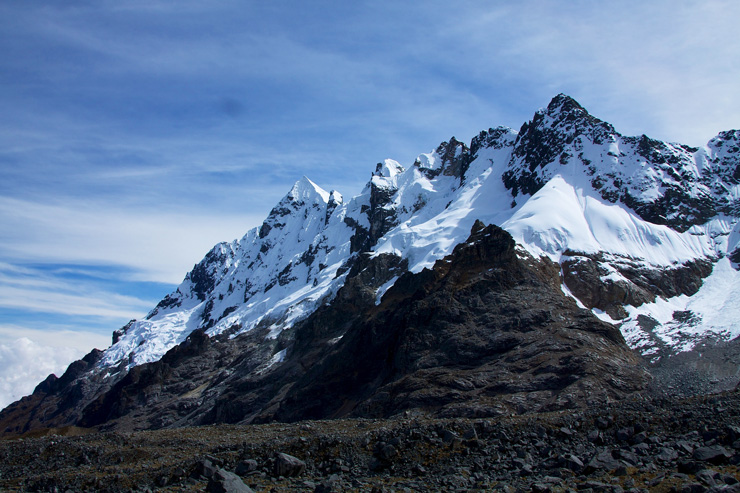
Day 2: Lake Soroy Cocha – Qelqemachay – Colcapampa (8 hours)
The second day begins with a 1-hour climb to the Huayracpampa pass, at an altitude of 4,460 meters (14,636 feet).
From there, the route continues with a long descent to Santa Teresa, where you’ll notice a dramatic change in vegetation, transitioning from high mountains to lush rainforest.
Lunch is served in Qelqemachay, and you’ll overnight at the Colcapampa camp.
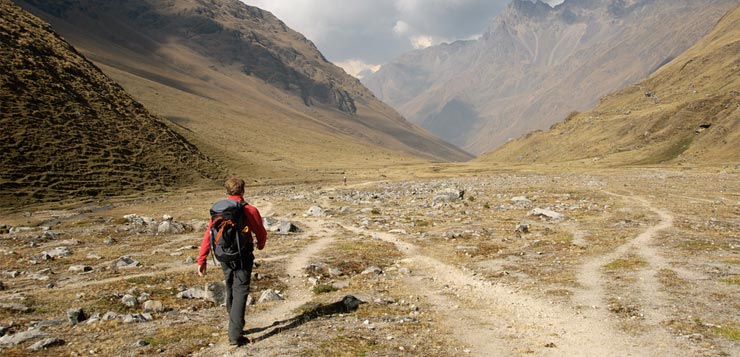
Day 3: Colcapampa – Lucma Bamba (6 hours)
This section of the Salkantay trek is particularly beautiful. Lucma Bamba is located in a humid forest zone with dense vegetation, numerous orchids, and an impressive 80-meter waterfall.
This area is part of the “selva alta” or “high forest”, a biodiversity hotspot. It is home to many endemic species, including 19 species of hummingbirds, making it a surprising contrast to the high-altitude landscapes you’ve come from.
Overnight at the Lucma Bamba camp.
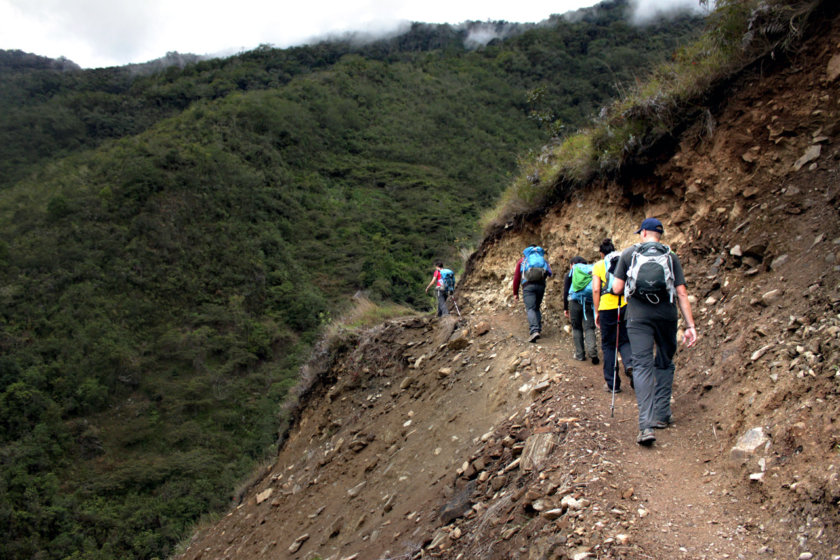
Day 4: Lucmabamba – Llactapata – Aguas Calientes (6 hours)
Today, we begin with an ascent to 2,700 meters (8,858 feet) towards Llactapata.
The verdant path is well worth the effort, especially for the magnificent view of the backside of Machu Picchu and the surrounding mountains.
Llactapata is believed to have been a resting point on the way to Machu Picchu during Inca times.
Interesting fact: although it was briefly studied by Hiram Bingham in 1912, it wasn’t until 2003 that the Thomson and Ziegler expedition conducted detailed research on the site.
In the afternoon, take the train to Aguas Calientes, located at the foot of Machu Picchu, where you’ll stay overnight.
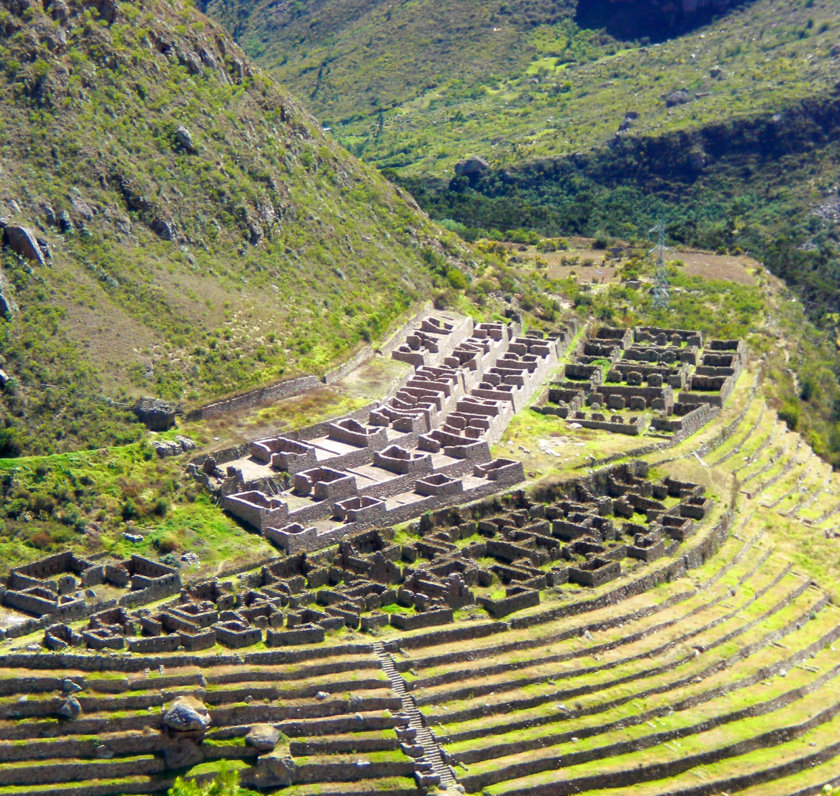
Day 5: Visit Machu Picchu
This is your day to visit Machu Picchu and explore one of the world’s most iconic sites.
Early in the morning, you’ll take the bus to the Inca citadel to ensure you arrive as soon as it opens. After a detailed guided tour of the site, you’ll head back to Cusco by train in the afternoon, completing your unforgettable adventure.
You can book your Salkantay trek here:
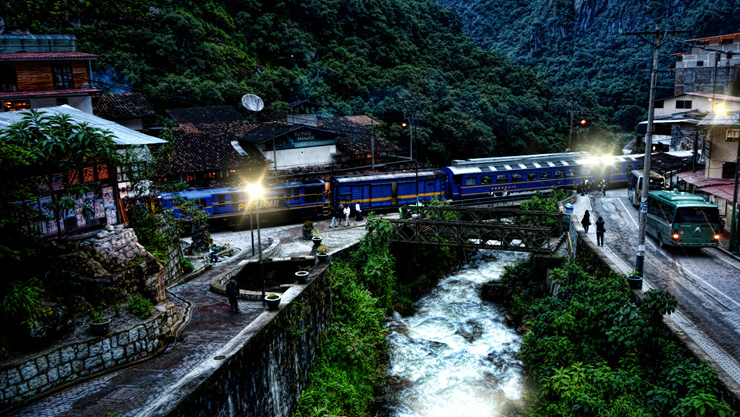
Is it Possible to Do the Salkantay Trek Solo (Without an Agency)?
Yes, it’s possible to do the Salkantay Trek without an agency, but there are some important factors to consider:
- Physical fitness is key: The trek includes high-altitude passages, and it’s recommended for experienced trekkers.
- Well-marked trails: The route is clearly signposted, making it easier for those familiar with trekking routes.
- Water access: While water is available along the way, it’s best to carry a purifier to ensure safety, as you’ll need to filter it.
- Food: Bring all necessary supplies, as kiosks along the way sell only basic snacks.
- Entry fee for Mollepata: 20 soles to access the village.
Getting to the Starting Point from Cusco
- Colectivo from Avenida Arcopata (Cusco) to Mollepata
- Bus from Mollepata to Soraypampa
Booking the Salkantay Trek: Everything You Need to Know
Do I Need to Book in Advance?
It’s always recommended to book in advance, though it’s not essential as the trek doesn’t have a set limit like the Inca Trail.
However, if you plan to climb Wayna Picchu in addition to visiting Machu Picchu, advance booking is a must as spaces fill up quickly!
Which Agency Should I Choose for the Salkantay Trek?
While it’s not mandatory to use an agency, I strongly recommend booking the Salkantay Trek with one for safety and convenience.
An agency will also allow you to avoid carrying all your personal belongings, making the trek much more enjoyable.
You can book the 5-day Salkantay trek (4 days hiking + 1 day to visit Machu Picchu). The tour includes:
- Hotel pick-up in Cusco
- Porters
- All meals (except the last day’s lunch)
- Equipment
- Round-trip train ticket to Cusco
- Hotel accommodation in Aguas Calientes
You can book your Salkantay trek here:
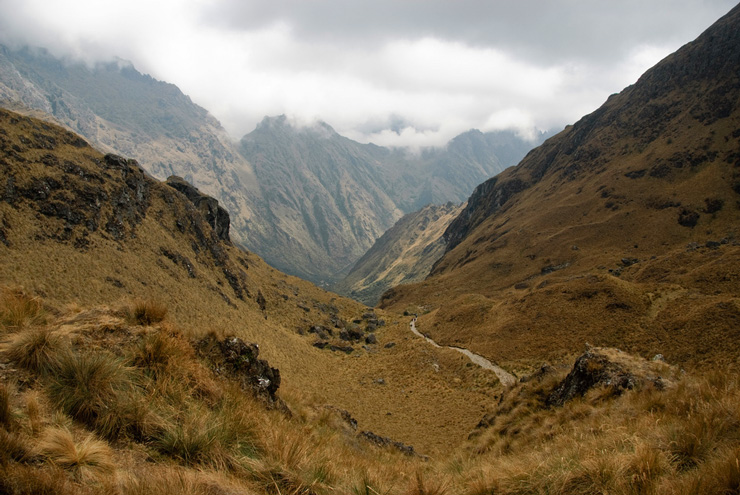
Is the Salkantay Trek difficult?
The Salkantay Trek is considered of medium difficulty, meaning that you need to be physically fit, but you don’t need to be an expert in trekking.
It’s slightly more challenging than the Inca Trail trek.
You’ll be walking for around 5-8 hours per day, and there are some important factors to consider, such as altitude (your guide will provide oxygen if needed), wind, and temperature variations.
How high does the Salkantay Trek go?
The highest point of the trek is 4,650 meters (15,255 feet) above sea level.
Even if you’re in good shape, it’s important to spend at least 2 days in Cusco beforehand to acclimatize to the altitude. This is crucial for your comfort and safety!
- Also check out my article: 10 tips to avoid altitude sickness.
What’s the temperature like on the trek?
The temperature in the Salkantay Trek varies significantly due to different altitudes.
On the first day, temperatures can reach up to 17°C during the day, dropping to 0°C or even -5°C in winter.
By the second day, the weather becomes much warmer, which is why it’s essential to be prepared for all types of weather during the trek.
What happens if I’m too slow?
The trek pace can be fairly fast, and you need to be in good physical condition to keep up.
However, no one is left behind, and the guide will always stay with the last person to ensure that everyone reaches the camp safely.
For larger groups (9 people or more), there will be one guide at the front and another at the back to assist everyone.
- On day 2, if needed, you can hire a horse for extra help.
What happens if I fall ill?
The guides carry oxygen and a first-aid kit with them, and they are trained in basic first aid.
While it’s rare, if a traveler needs to return to Cusco due to illness, the team will assist with the process.
Are there any compulsory vaccinations?
There are no mandatory vaccinations for Peru. However, I recommend checking for basic vaccinations like tetanus before traveling.
The only vaccination strongly recommended for travel to the Amazon is yellow fever, but this isn’t necessary for the Salkantay trek.
How many people make up a group?
Groups typically consist of 7 to 16 people. If preferred, you can opt for a private group for the Salkantay trek.
How comfortable is the trek?
You’ll be sleeping in 4-person tents designed for 2 people, providing ample space.
You may also request a private tent for an additional fee (typically $30-$40 USD for a one-person tent).
Are there toilets available on the trek?
Yes, there are toilets along the route and at the campsites.
Should I leave a tip?
Tipping is not mandatory, but it is greatly appreciated by the guides and porters, who work hard to provide a great experience.
Typically, travelers donate between $5 and $10 USD per day.
Where can I leave my suitcase or rucksack during the trek?
You can leave your luggage at your hotel, or the agency can store it for you during the trek.
Do I need to bring money?
Yes, you should bring cash with you for certain expenses:
- 20 soles for the trekking entrance fee to Mollepata
- Meals not included (e.g., breakfast on day 1 and lunch on the last day); budget between 10 and 15 soles per meal
- Expenses in Aguas Calientes (e.g., restaurants, souvenirs)
- Tips for guides and porters
Peruvian soles are preferred for cash payments.
What is the age requirement for the Salkantay trek?
While there is no official age limit for the Salkantay trek, most agencies accept children aged 7 or older, and some may require a minimum age of 10.
If you’re over 60, it’s advisable to consult with your doctor before taking on the trek.
How much does the Salkantay trek cost?
The price of the Salkantay trek varies depending on factors such as group size, duration, and included services, ranging from $500 to $700 USD or more!
Here’s a breakdown of what’s generally included:
- Included: Guide, assistant, hot meals (breakfast, snack, lunch, dinner, except lunch on the last day), tents, mattresses, cooks, horse porters, entrance to Machu Picchu, entrance to Tarawasi, entrance to Llactapata, all transfers, first-aid kit and oxygen, bus to and from Machu Picchu, train in Expedition category.
- Not included: Sleeping bag (available for rent from the agency), overnight stay in Aguas Calientes (varies by agency), tips.
What’s the difference between the Inca Trail and the Salkantay Trek?
Both treks are absolutely incredible and offer unique experiences!
Here’s a comparison to help you choose the best option for you:
Salkantay Trek
- Less crowded than the Inca Trail (about 70% fewer tourists!)
- Not limited by quotas, so more flexibility with dates
- Less expensive than the Inca Trail
- Physically more demanding (longer, higher altitudes)
- Doesn’t go directly to Machu Picchu (you descend to Aguas Calientes and then ascend to Machu Picchu)
- Incredible natural scenery (lakes, mountains, jungle)
- Can be done solo (for experienced trekkers)
- More rustic, with fewer facilities (no showers, basic camping)
Inca Trail
- Visit several Inca archaeological sites along the way
- Ends directly at Machu Picchu from the Sun Gate
- Well-maintained facilities
- Limited by quotas: must be booked months in advance
- More touristy, crowded
- Guide required
- Physically less demanding
Check out my full guide on the Inca Trail!
Book your Inca Trail trek here:
What Other Treks Lead to Machu Picchu?
In addition to the Salkantay trek, there are several other amazing trekking options to reach Machu Picchu.
The Inca Trail
The Inca Trail is by far the most famous trek to Machu Picchu. A breathtaking 4-day trek that follows the ancient Inca route, this trek immerses you in history and nature, passing through a variety of landscapes and several impressive Inca archaeological sites.
The highlight of the trek is arriving at Machu Picchu from Inti Punku, the Sun Gate. This is the only trek that brings you directly to Machu Picchu.
However, keep in mind that the Inca Trail has very limited quotas, meaning you need to book months in advance to secure your spot.
You can book your Inca Trail trek easily here:
If you’re short on time, you can also book the short version of the Inca Trail (2 days):
The Lares Trek
The Lares trek is less known than the Salkantay trek.
It doesn’t pass through archaeological sites, but instead takes you through local communities and breathtaking landscapes.
This trek is relatively short and very accessible, with just a 4-hour walk on day 3 and a visit to Machu Picchu on day 4.
You can book the Lares trek (which includes visits to the Lares thermal waters and an overnight stay in Aguas Calientes) here:
The Huchuy Qosqo Trek
Huchuy Qosqo means “little Cusco” in Quechua. The site was occupied by the Incas from the 11th century onwards, and was the royal residence of the Inca Viracocha in the 15th century.
There are several buildings, palaces, terraces, and a canal system. Since you can only get there on foot or horseback, there’s hardly anyone around!
It’s a great option for those who want to combine trekking with history and culture. A hike through Huchuy Qosqo, followed by a transfer to Aguas Calientes for the Machu Picchu visit the next day, is accessible to all levels.
The Inca Jungle Trail
The Inca Jungle Trek is the best option for adventure-seeking travelers looking for more than just hiking, with a variety of adventure sports (mountain biking, rafting, zip-lining).
While the trek doesn’t involve much walking, it’s still physically engaging and perfect for those looking for an action-packed journey.
It’s a true adventure!
You can book the Inca Jungle trail here:
Where to Stay in Aguas Calientes
- Municipal Camping: The most budget-friendly option is to camp in Aguas Calientes (20 minutes from the center, here). For 15 soles per tent, you get access to toilets, cold-water showers, and a kitchen. Don’t forget to bring toilet paper and food before arriving. Not recommended from December to February due to heavy rains.
- Supertramp Hostel Machupicchu: A colorful, clean hostel with a rooftop terrace, happy hours bar, and on-site restaurant. Great location, away from the noise. With breakfast included from just $14 USD for a dorm bed or $55 USD for a room!
- Panorama B&B: Located a few steps from the market, the train station, and the bus to Machu Picchu, it offers panoramic views of the river and mountains. Comfortable hotel with a warm welcome from Christophe, the owner, who’s always happy to share information about Machu Picchu and the surrounding area. From $100 USD per night.
- Casa del Sol Boutique Hotel 4*: The ideal hotel for a romantic stay, with rooms overlooking the river and a Jacuzzi, a spa, and a swimming pool. Breakfast and dinner are included with your stay at the Manko restaurant. From $230 USD per night.
- InkaTerra Machu Picchu Pueblo Hotel 5*: This magnificent ecolodge on the banks of the Vilcanota River is the best choice for a luxury stay in Peru. With a 5-hectare private garden featuring 372 species of orchids, 162 species of birds, 108 species of butterflies, and even a freshwater waterfall. With breakfast and dinner included, from $460 USD per night.
Where to Stay in Cusco
Here are some great value hotels in Cusco, for different budgets:
- Backpacker La Bo’M: This is one of the best hostels in Cusco, with a delicious creperie next door, both run by Sarah, a French expat. Very well located in the San Blas district, with good wifi, a friendly atmosphere, and of course, great crêpes for breakfast. From just $13 USD for a dorm bed or $32 USD for a room!
- La Casona Real Cusco: For more comfort, here’s a lovely hotel in traditional style, located on a very quiet street, just steps from the Plaza de Armas. Very clean, hot water, good wifi, excellent service, breakfast included. From just $75 USD per night!
- Tierra Viva Cusco San Blas Hotel: A charming hotel in San Blas, with a higher range offering fairly spacious rooms, very comfortable beds, beautiful modern decor with traditional Cusco elements, an interior courtyard, and a buffet breakfast included with your stay. From $98 USD per night!
- Antigua Casona San Blas: A small, chic, and intimate 4* hotel located in the San Blas district, with very comfortable rooms, a warm atmosphere, and both modern and traditional decor. The Piedra & Sal restaurant is one of the best in Cusco! Excellent breakfast included, from $260 USD per night
- Palacio del Inka Luxury Collection: A 5* luxury hotel ideal for a romantic stay in Cusco! It’s located in a large colonial house facing the Coricancha, of which it was part during the Inca Empire. With an indoor pool, gym, spa, bar, and restaurant. Delicious breakfast included, from $320 USD per night
Book Your Flight at the Best Price
Planning a trip to Peru? To get the best deal on your flights, I recommend using this flight comparison tool, in partnership with Skyscanner.
It’s the easiest way to find the lowest prices for both international flights and domestic flights within Peru—ensuring you pay the best rate with no hassle!
Rent a Car in Peru
Renting a car is one of the best ways to explore Peru at your own pace and make the most of your trip!
Personally, I always use Booking.com Cars for a few key reasons:
- Easily compare prices from all major rental agencies in one place—finding the best deal has never been easier!
- Free cancellation on most bookings, so you can reserve with peace of mind.
- Better insurance coverage at a lower price than rental companies—saving you money with no extra effort.
Click the button below to find the best car rental deals in Peru:
Rent a car
Book entrance tickets and guided visits
Take a travel insurance
Book a tour
✈️ Book your flight
Traveling to Peru? These articles will help you!
Discover all my articles about Peru: All my tips and itineraries to plan your trip in one place!
- 30 Epic things to do in Cusco (+Tips)
- One day in Cusco: The Perfect Itinerary (1st time visit)
- 2 or 3 Days in Cusco: The Perfect Itinerary for First-Time Visitors
- Sacred Valley of the Incas: 23 Best Places to Visit (+Where to Stay)
- Aguas Calientes (Machu Picchu Pueblo): Tips, Hotels, and What to Do
- Machu Picchu: Tickets, Circuits, and Top Tips to Plan Your Visit
- Huayna Picchu vs. Machu Picchu Mountain: Which Hike is Best?
- Inca Trail: The Definitive Guide to the Classic Trek to Machu Picchu
- Inca Jungle Trail (Machu Picchu): What to Expect + My Experience
- Lares Trek to Machu Picchu: 4-Day Itinerary & Guide
- Choquequirao Trek: Complete Guide to the Lost Inca City of Peru
- Itinerary: 5-6 days in Peru – Lima, Arequipa, Colca Canyon, Cusco, Sacred Valley and Machu Picchu
- Itinerary: 7-8 days in Peru – See the maximum in one week
- Itinerary: 10 days in Peru – The ideal itinerary for a short stay in Peru
- Itinerary: 2 weeks in Peru – The classic route
- Itinerary: 15 days in Peru – An itinerary that includes northern Peru
- Itinerary: 3 weeks in Peru
- Itinerary: 3 weeks in Peru + Bolivia – The best itinerary for visiting both countries
- Itinerary: 1 month in Peru – What to see and do in 30-31 days
- Road trip in Peru – The 5 best itineraries by car
You’re using Pinterest? Here is the picture to pin!
